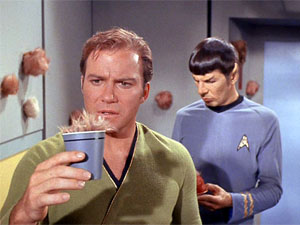 Ah, “The Trouble with Tribbles“. I would guess that this is probably the most famous single episode of Star Trek ever produced. It certainly stands out as a distinctive episode for its overall humorous mood, which is very different to anything that has come before. This would fit nicely into Star Trek if it had been a sitcom, rather than a drama.
Ah, “The Trouble with Tribbles“. I would guess that this is probably the most famous single episode of Star Trek ever produced. It certainly stands out as a distinctive episode for its overall humorous mood, which is very different to anything that has come before. This would fit nicely into Star Trek if it had been a sitcom, rather than a drama.
That’s not to say there’s no drama at all though. The overarching story is a tense standoff between the Enterprise crew and that of a Klingon battlecruiser, both of whom are overseeing attempts to establish control over the disputed Sherman’s Planet under the terms of the Organian Treaty (enacted by the Organians in “Errand of Mercy“). Whichever government can demonstrate better development of the planet’s resources will be awarded control of it. They interact under an uneasy truce on the Federation outpost of Deep Space Station K-7, where Federation Undersecretary in charge of Agricultural Affairs Nilz Baris is in charge of a store of quadrotriticale (a strain of wheat), which he wants protected from the Klingons at all costs. Baris goes so far as to issue a Code One distress call to summon the Enterprise, which gets him on Kirk’s wrong side as Kirk sees this as an abuse of an emergency signal.
Some Klingons initiate a bar room brawl by taunting members of the Enterprise crew and their captain. Scotty resists, until they insult the Enterprise itself, at which he throws the first punch. He is humorously chewed out by Kirk, who confines Scotty to quarters, which Scotty sees as a welcome chance to read technical journals. Before this, a waitress in the bar demonstrates a good example of space clothes, in a skimpy outfit with horizontal candy stripes and a set of butterfly wings attached to her back. The bar is in fact the focal point of much of the episode, since it’s here we meet Cyrano Jones, an itinerant merchant bordering on con-man who convinces the barkeep to buy some tribbles, before wandering bemusedly through the brawl. Tribbles are small balls of fuzz which make soothing purring noises, and Uhura takes a liking to one, which Cyrano gives to her as a sample. And here’s where the trouble starts.
The tribble has babies. And the babies soon have babies. McCoy takes one to examine and determines that they are essentially born pregnant and multiply as fast as their food source allows. Pretty soon they are infesting the Enterprise. When they get into the food synthesisers via the air ducts, Kirk suddenly realises the quadrotriticale on board the space station is under threat. Racing to the storage bins, he finds them full of gorged tribbles and no wheat. Baris is livid, blaming Kirk for this disaster and the loss of Sherman’s Planet. Spock calculates that there are 1,771,561 tribbles. But McCoy notices most of the tribbles are dead or dying, and concludes the wheat was poisoned, probably by a Klingon agent. And here the tribbles show their usefulness, as we’d seen in the bar earlier that they hate Klingons. When Kirk approaches Baris’s assistant Darvin with a tribble, it hisses at him, thus revealing him to be the Klingon agent. Kirk thus saves the day, to the annoyance of Baris.
Back on the Enterprise, Kirk wonders where all the tribbles went. Scotty reluctantly admits he beamed them all over to the Klingon ship just before it went into warp, and everyone laughs.
Overall it’s actually a pretty good story, and the constant humour just makes it enjoyable, not annoying. Adding to it is that they’ve deliberately ramped up Chekov’s tendency to claim everything was invented in Russia or first done by a Russian – he claims no fewer than three such incidences in this episode: that Sherman’s Planet was first surveyed by a Russian, that quadrotriticale was a Russian invention, and that Scotch whisky was invented by “a little old lady from Leningrad”. Other points of interest: This is the first time in the series where we get an exterior shot of a space station (as opposed to a starbase, which are on planets). It’s not a bad model shot either. And we see Cyrano Jones and the bartender haggling prices in credits – another clear example of money in Star Trek. Finally, the main Klingon, Koloth, seemed eerily familiar as I watched this episode, but I couldn’t place the actor. It turns out it’s William Campbell, the guy who played the annoying Trelane in “The Squire of Gothos“. His acting style really makes for a snide and conniving, but cowardly Klingon. It fits the episode, but not Klingons in general. Final judgement: A clever and exceptionally good story, with the comedy elements handled well, and integrated seamlessly around a solid enough nugget of dramatic plot to make this a great episode.
Tropes: Call Back, Truce Zone, Straw Civilian, Bar Brawl, I Take Offense To That Last One, McLintock Punch, Unishment, Space Clothes, Intrepid Merchant, Lovable Rogue, Strolling Through The Chaos, Born As An Adult, Exploding Closet, Ludicrous Precision, Everybody Laughs Ending, In The Original Klingon, Now If You Will Excuse Me I Have A Noun To Verb.
Body count: None!

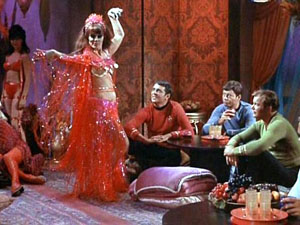 “
“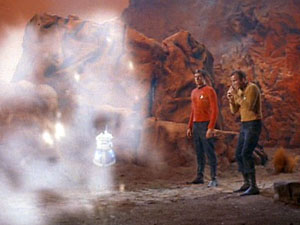 “
“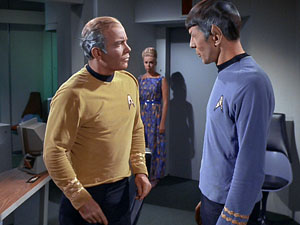 Ah, “
Ah, “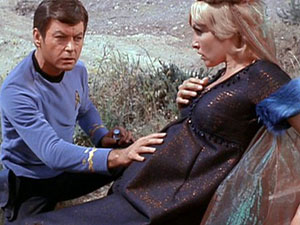 “
“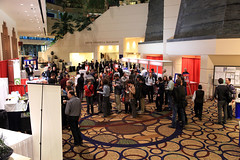
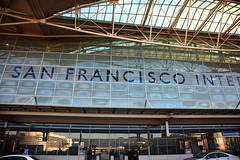


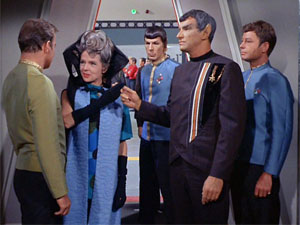 “
“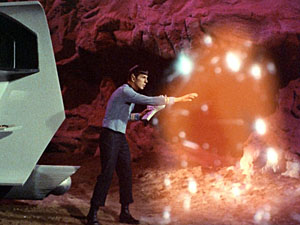 “
“